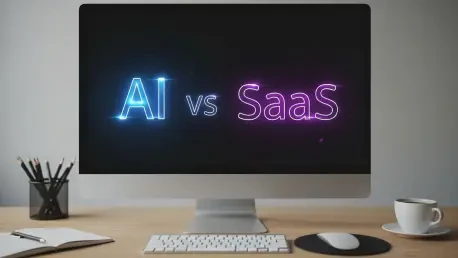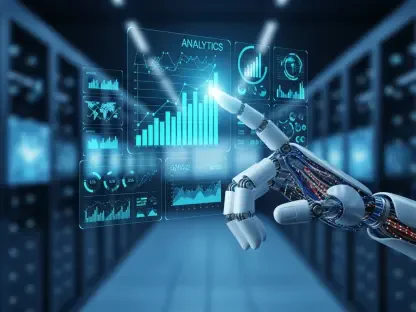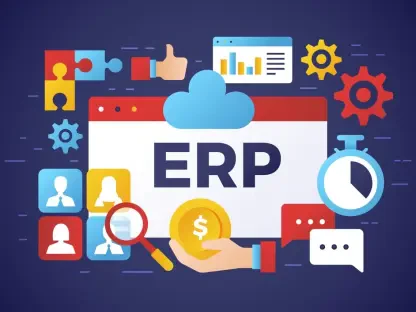In an era where digital transformation dictates the pace of business evolution, a staggering statistic emerges: the global software market is projected to grow exponentially, with AI technologies and SaaS models at the forefront of this revolution. Artificial Intelligence (AI) captivates with its promise of automating intricate processes, while Software as a Service (SaaS) offers accessible, subscription-based solutions that power enterprises worldwide. This comparison delves into the distinct yet intersecting realms of AI and SaaS, exploring how each shapes industries and challenges the other in a dynamic tech landscape. By dissecting their business models, functionalities, and market impacts, a clearer picture emerges of their unique strengths and potential synergies.
Understanding AI Technology and SaaS Models
AI technology encompasses a range of systems designed to mimic human intelligence, enabling machines to perform tasks such as data analysis, natural language processing, and predictive modeling. These tools, often powered by machine learning and large language models, drive efficiency by automating complex operations that once required significant human intervention. From virtual assistants to advanced analytics platforms, AI’s scope continues to expand, reshaping how businesses approach problem-solving and innovation.
SaaS, on the other hand, represents a cloud-based software delivery model where applications are hosted by providers and accessed by users over the internet on a subscription basis. This approach eliminates the need for on-premises infrastructure, offering scalability and ease of access to tools like customer relationship management (CRM) systems or project management software. SaaS has become a cornerstone for businesses seeking cost-effective, flexible solutions without the burden of managing hardware or software updates.
The relevance of both technologies is evident across sectors, with AI revolutionizing areas like customer service through chatbots and healthcare via diagnostic tools, while SaaS dominates in enterprise resource planning and collaborative platforms. Their applications often overlap, yet their core purposes diverge—AI focuses on intelligent automation, whereas SaaS prioritizes structured, user-friendly software delivery. This sets the stage for a detailed examination of how they compare in accessibility, functionality, and overall impact on modern business ecosystems.
Key Comparisons Between AI Technology and SaaS Models
Business Model and Accessibility
AI technology frequently adopts a freemium model, providing basic functionalities at no cost to attract a wide user base before upselling premium features. Tools like certain chatbots or search assistants offer free access, which proves especially appealing in price-sensitive regions such as India, where tech adoption is high but budgets can be constrained. This strategy lowers the entry barrier, enabling individuals and small businesses to experiment with cutting-edge solutions without immediate financial commitment.
In contrast, SaaS relies heavily on a subscription-based revenue structure, requiring consistent payments for continued access to services. While this ensures a steady income stream for providers, it can deter potential users who find recurring costs prohibitive, particularly in markets sensitive to pricing. For instance, in India, where cost-consciousness drives purchasing decisions, SaaS platforms must often justify their value against free or low-cost AI alternatives to maintain user adoption rates.
The disparity in accessibility highlights a fundamental difference: AI’s freemium approach democratizes technology by prioritizing reach over immediate profit, whereas SaaS focuses on sustained financial engagement through predictable billing cycles. This distinction influences how each technology penetrates diverse markets, shaping user perceptions and adoption patterns in significant ways.
Functionality and Customization
Functionally, AI excels in automation and generative capabilities, offering solutions that adapt to a broad array of tasks, from content creation to data-driven insights. Its strength lies in versatility, as AI systems can learn from vast datasets to provide innovative outputs, often without requiring deep customization. However, this generality can sometimes lack the precision needed for highly specialized business processes, limiting its depth in proprietary contexts.
SaaS, by comparison, emphasizes structured, domain-specific tools tailored to particular industries or workflows, such as pricing optimization for retail or compliance tracking for finance. These platforms often integrate seamlessly with existing systems, providing deep customization that addresses niche requirements. Industry insights suggest that enterprises value SaaS for its ability to deliver precise, outcome-driven results, especially when handling sensitive or regulated data that generic AI might not adequately support.
While AI offers a wide-reaching, adaptable framework that sparks creativity and experimentation, SaaS counters with focused, reliable solutions built for specific operational needs. This contrast underscores a critical trade-off: breadth versus depth, where businesses must weigh the benefits of AI’s flexibility against the targeted efficiency of SaaS offerings in their decision-making processes.
Scalability and Market Impact
When it comes to scalability, AI demonstrates remarkable potential for rapid expansion, fueled by advancements in model sophistication and widespread accessibility through freemium structures. Its ability to cater to diverse user bases—from individual developers to large corporations—positions it as a disruptive force capable of quickly adapting to escalating demands. This agility allows AI to penetrate markets at an accelerated pace, often outstripping traditional software growth timelines.
SaaS, however, scales through a more measured approach, focusing on enterprise solutions that grow alongside organizational needs via tiered subscription plans. Projections indicate that markets like India could see SaaS revenues soar to $100 billion within the next decade from 2025, driven by enterprise digitization and government-backed initiatives. This steady expansion solidifies SaaS as a reliable partner for long-term business infrastructure, though it faces competitive pressure from AI’s swift market infiltration.
The market impact of both technologies reveals distinct challenges and opportunities: AI’s freemium-driven growth can erode SaaS’s customer base by offering comparable tools at lower costs, while SaaS counters with robust, specialized services that retain enterprise loyalty. Balancing these dynamics requires an understanding of how each technology’s scalability influences competitive positioning and shapes future industry trends.
Challenges and Limitations of AI and SaaS
AI technology grapples with significant hurdles, including ethical dilemmas surrounding bias in algorithms and the pressing need for governance in enterprise applications. The lack of explainability in AI decision-making processes often raises concerns among businesses that require transparency for compliance and trust. These issues, compounded by a dependency on high-quality data, can hinder AI’s adoption in regulated or risk-averse sectors where accountability remains paramount.
SaaS faces its own set of obstacles, notably in customer retention as freemium AI alternatives gain traction. The challenge lies in justifying subscription costs when free tools appear to offer similar functionalities, pushing SaaS providers to continuously innovate or risk losing market share. Additionally, the reliance on consistent user payments can strain relationships with clients who prioritize cost savings over long-term value, especially in competitive landscapes.
Both technologies encounter technical and business limitations that impact their trajectories. For AI, poor data inputs can lead to unreliable outputs, while SaaS struggles to differentiate itself in a market increasingly crowded with low-cost disruptors. These challenges highlight the real-world implications for adoption, as companies must navigate ethical, financial, and operational barriers to fully leverage either solution in their strategic frameworks.
Conclusion: Choosing the Right Solution for Your Needs
Reflecting on the exploration of AI technology and SaaS models, it becomes evident that their differences in accessibility, functionality, and market dynamics define their respective roles in the tech ecosystem. AI stands out for its cost-effective, experimental nature through freemium models, while SaaS carves a niche with specialized, compliance-driven solutions for enterprises. Moving forward, businesses are advised to align their choice with specific objectives—opting for AI when seeking innovative, low-barrier tools, or SaaS for structured, industry-specific needs. A hybrid approach emerges as a compelling path, blending AI’s adaptability with SaaS’s precision to address complex challenges. As the technological landscape continues to evolve, staying attuned to emerging integrations and focusing on outcome-driven strategies promises to guide organizations toward sustainable growth and competitiveness.









